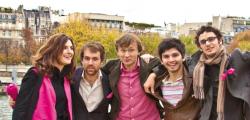
Queen Victoria statue outside Queen Victoria Building, Sydney. Photo by Sardaka – Wikimedia Commons
Top 10 Remarquable Facts About Queen Victoria Building
Queen Victoria was born Alexandrina Victoria in Kensington Palace; Victoria became Queen of the United Kingdom of Great Britain and Ireland and Empress of India. She inherited the throne on 20 June 1837 when she was just 18 years old.
Her reign ended on 22 January 1901 when she died at age 81. Victoria is one of Britain’s most renowned monarchs, but here are 10 facts that you may not have known.
1. Victoria was not meant to become Queen

Queen Victoria Building. Photo by Edwin.11 – Wikimedia Commons
When she was born, Victoria was fifth in line to the throne. Her grandfather was King George III. His first son and heir to the throne, George IV, had a daughter named Princess Charlotte.
Charlotte died in 1817 due to complications during childbirth. This led to panic about who would succeed George IV. His younger brother William IV took the throne but failed to produce an heir.
The next youngest brother was Prince Edward. Prince Edward died in 1820, but he had a daughter: Victoria. Victoria thus became Queen upon the death of her uncle, William IV.
2. Victoria kept a journal

Queen Victoria Building’s marble sculpture by William Priestly MacIntosh. Photo by Hpeterswald – Wikimedia Commons
Victoria began writing in a journal in 1832 when she was 13 years old. This was where she shared all of her thoughts, feelings, and secrets. She described her coronation, her political views, and her relationship with her husband, Prince Albert.
By the time of her death, Victoria had written 43,000 pages. Queen Elizabeth II digitized the surviving volumes of Victoria’s journals.
3. Victoria moved the royals to Buckingham Palace
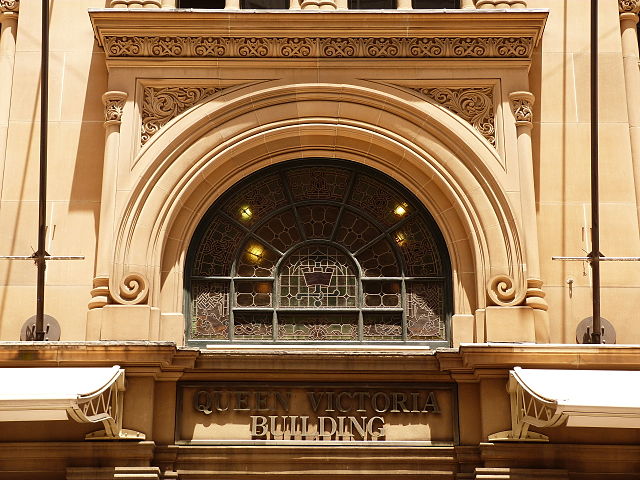
queen victoria building, Sydney. Photo by Sardaka – Wikimedia Commons
Before Victoria ascended the throne, British royals had lived at various residences, including St James’s Palace, Windsor Castle, and Kensington Palace. Yet, three weeks after inheriting the crown, Victoria moved into Buckingham Palace.
She was the first sovereign to rule from the palace. The palace was renovated and continues to serve as a personal and symbolic home to the sovereign today.
4. Victoria was the first to wear white on her wedding day
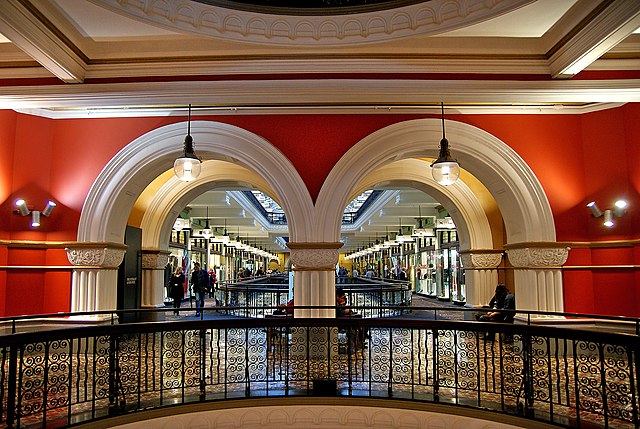
The Queen Victoria Building has been described by Pierre Cardin as “the most beautiful shopping center in the world”. This outstanding example of Byzantine architecture, which occupies an entire city block, was built in 1898 to replace the original Sydney Markets. Later, it accommodated a concert hall, which eventually became the City Library. The building was remodeled in the 1930s and used for different purposes, including municipal offices. In 1984 it was completely refurbished as a shopping center, with more than 200 shops. The renovations, by the Malaysian company Ipoh Garden Berhad, were highly imaginative and thoughtful. Most important, they retained the turn-of-the-century charm of the building. Photo by Bernard Spragg. NZ from Christchurch, New Zealand – Wikimedia Commons
Women typically wore their favorite dresses on their wedding day, regardless of their color. Yet, Victoria opted to wear white satin and lace gown. She is accessorized with an orange blossom wreath, a diamond necklace and earrings, and a sapphire brooch.
This began a tradition of white wedding dresses that continues today.
Queen Victoria’s husband was Albert of Saxe-Coburg-Gotha – her first cousin, who she married in February 1840. The royal couple first met four years earlier, a few days before Victoria’s 17th birthday party.
Victoria and Albert had a whopping nine children together – their names were Victoria, Edward, Alice, Alfred, Helena, Louise, Arthur, Leopold, and Beatrice.
5. Victoria is known as the ‘Grandmother of Europe’

Queen Victoria Building, Sydney. Photo by Sardaka – Wikimedia Commons
Victoria and Albert had nine children. Many of their sons and daughters married into European monarchies to strengthen allegiances and British influence.
They had 42 grandchildren in royal families throughout Europe, such as Britain, Germany, Spain, Norway, Russia, Greece, Sweden, and Romania. The warring leaders in World War One were Victoria’s grandchildren!
6. Victoria spoke many languages
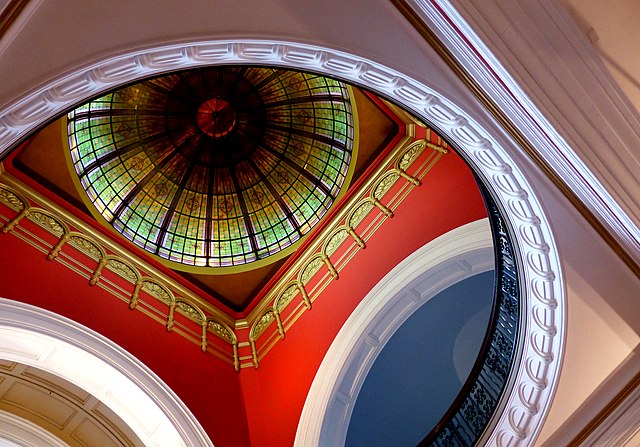
The Queen Victoria Building (or QVB), is a late nineteenth-century building designed by the architect George McRae in the central business district of Sydney, Australia. The Romanesque Revival building was constructed between 1893 and 1898 and is 30 meters (98 ft) wide by 190 meters (620 ft) long. The building fills a city block bounded by George, Market, York, and Druitt Streets. Designed as a marketplace, it was used for a variety of other purposes, underwent remodeling, and suffered decay until its restoration and return to its original use in the late twentieth century. Photo by Bernard Spragg. NZ from Christchurch, New Zealand – Wikimedia Commons
As her mother was German, Victoria grew up speaking fluently German and English. She had a strict education and learned to speak some French, Italian, and Latin.
When Victoria was older, she began to learn Hindustani. She developed a close friendship with her Indian servant, Abdul Karim, who taught her some phrases so that she could speak with her servants.
7. Victoria mourned Albert for almost 40 years
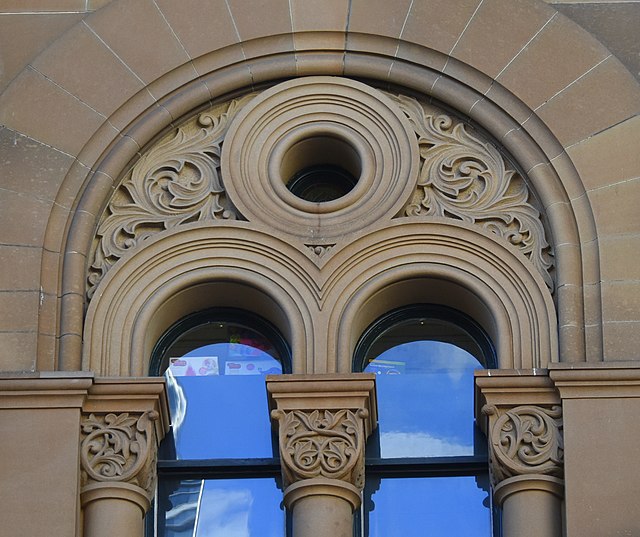
Queen Victoria Building, Sydney. Photo by Sardaka – Wikimedia Commons
Albert died in December 1861, when Victoria was just 42 years old. After his death, she wore only black to reflect her deep mourning and sadness. She withdrew from her public duties. This began to affect Victoria’s reputation, as people began to lose patience.
She eventually returned to her royal duties in the 1870s but mourned Albert until her death.
8. She was a carrier of the royal disease

Queen Victoria Building, Sydney. Photo by Sardaka – Wikimedia Commons
Victoria was a carrier of haemophilia, a rare inherited disease that prevents blood from clotting. The condition has appeared in many European royal families that trace their lineage to Victoria.
Victoria’s son Leopold had the condition and died after a fall triggered a cerebral haemorrhage.
9. Victoria survived assassination attempts

Queen Victoria Building facing North. Photo by Hpeterswald – Wikimedia Commons
There were at least six attempts on Victoria’s life. The first attempt was in June 1840, when Edward Oxford tried to shoot Victoria whilst she and Albert were on an evening carriage ride. She survived further attempts that took place in 1842, 1949, 1850, and 1872.
Ruling for over 60 years, Victoria would become the longest reigning British Monarch, and Queen of the biggest empire in history. During her time as Queen, the British Empire included Australia, New Zealand, Canada, South Africa, and India.
10. There are lots of places around the world named after Victoria

queen victoria building, Sydney. Photo by Sardaka – Wikimedia Commons
Cities, towns, schools, and parks are just some of the places named after Victoria. The queen-inspired Lake Victoria in Kenya, Victoria Falls in Zimbabwe, and Victoria Park in Bhavnagar, India.
There are lots of famous places and sites around the world named after this famous British Queen, such as the Victoria Falls in Zambia and Zimbabwe and victoria Square in Athens, Greece.
Canada named two of its cities after her (Regina and Victoria), while Australia named two of its states after the monarch (Queensland and Victoria).
Planning a trip to Paris ? Get ready !
These are Amazon’s best-selling travel products that you may need for coming to Paris.
Bookstore
- The best travel book : Rick Steves – Paris 2023 – Learn more here
- Fodor’s Paris 2024 – Learn more here
Travel Gear
- Venture Pal Lightweight Backpack – Learn more here
- Samsonite Winfield 2 28″ Luggage – Learn more here
- Swig Savvy’s Stainless Steel Insulated Water Bottle – Learn more here
Check Amazon’s best-seller list for the most popular travel accessories. We sometimes read this list just to find out what new travel products people are buying.





